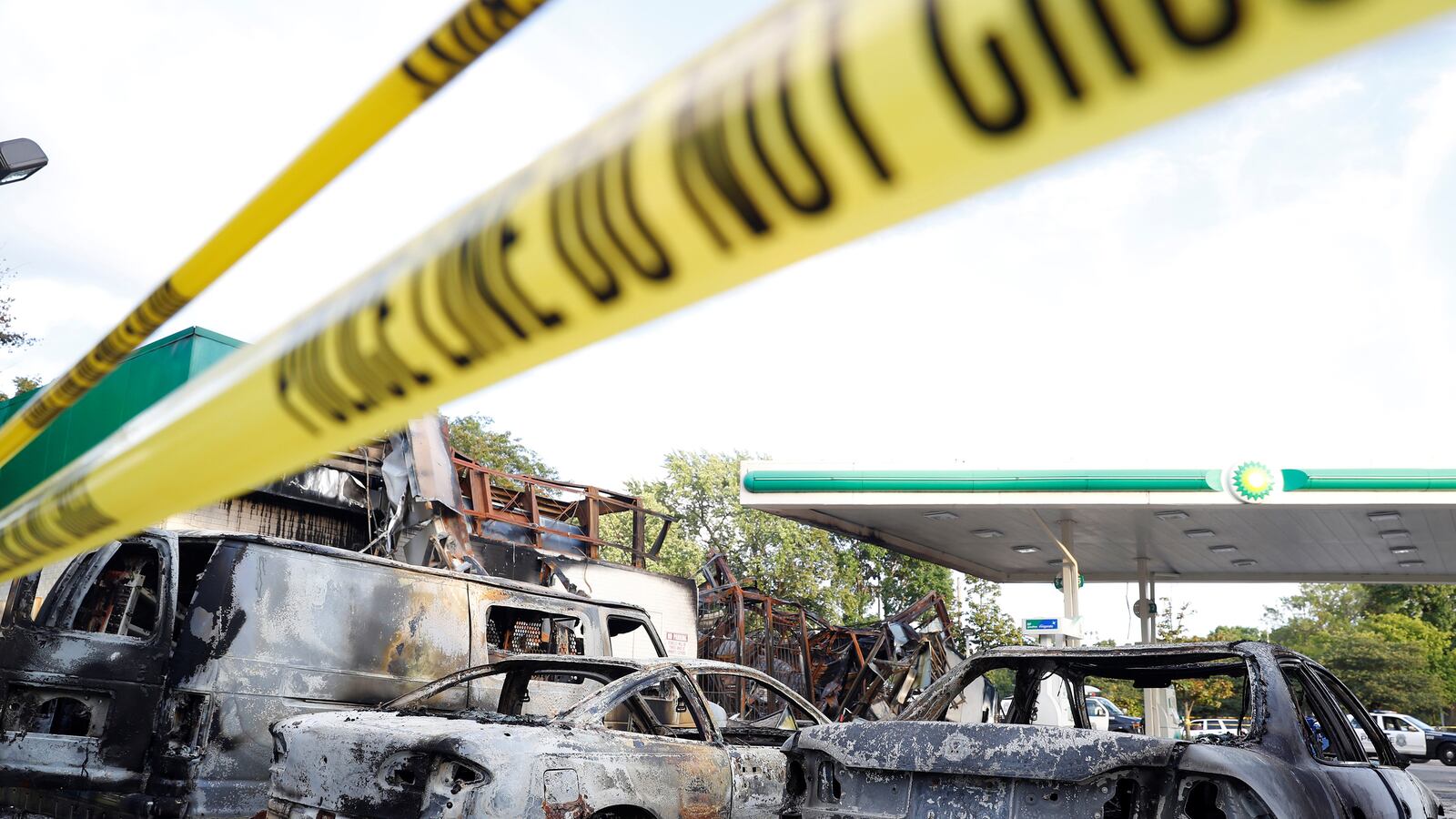MILWAUKEE — The gas station that was torched on Saturday night following the police killing of Sylville Smith wasn’t burned at random, just as the unrest wasn’t all about Smith.
Smith fled a from a traffic stop on Saturday afternoon, emerged from his car with a loaded pistol, and refused to drop it before the officer opened fire, police said. Unlike many other police shootings that have prompted protests and unrest, the officer who shot Smith was black, according to police. The narrative of an unarmed black man with a clean record caught in the wrong place falling victim to a white officer’s questionable actions doesn’t apply here.
In all over the weekend, eight officers were injured, 31 people were arrested, 10 squad cars were damaged—two of which were totaled—and six businesses were burned, according to Milwaukee police.
But those who would deride black Milwaukee for lionizing a supposed criminal who had allegedly intimidated a witness over a shooting he was allegedly involved in doesn’t apply either, community activist Vaun Mayes explained.
While issues such as unemployment, an underfunded education system, and “general poverty” play a significant role in the black community’s frustrations that spilled out on Saturday and Sunday nights, the genesis of much of the fervent anger goes back at least to the police killing of Dontre Hamilton in 2014. Hamilton, a mentally ill and unarmed black man, was shot 14 times after off-duty officer Christopher Manney told him to leave the park he was sleeping in. After waking Hamilton, Manney struggled with him, hitting him with his baton several times.
Hamilton’s killing on April 30, 2014, preceded that of Michael Brown in Ferguson, which essentially launched the Black Lives Matter movement and sparked the current media environment that heaps scrutiny on every police shooting nationwide.
“He should be in jail,” Mayes told The Daily Beast of the cop who killed Hamilton.
Officer Manney was fired, but no charges were ever filed. He went on to apply for and receive a disability pension from the Milwaukee Police Department worth an estimated $70,000. He says he now suffers from post-traumatic stress disorder as a result of killing Hamilton.
“That was supposed to be an open and shut case,” Mayes said of Manney, indicted on the streets for Hamilton’s death but never in the courts.
And so, on Saturday and Sunday night, when many people were watching flames in Milwaukee asking “why?” Mayes and others did not shake their heads.
And to say the gas station at Sherman Boulevard and Burleigh Street was burned at random would be a dismissal of events in the neighborhood this summer.
Mayes said the gas station went up in flames because of long-running feud between its owner and teens in the neighborhood. The owner fired a handgun at or near the teens just three weeks ago, according to Milwaukee police.
In another incident, a group of teens threw rocks through the window of the gas station, Mayes said. Milwaukee police confirmed that incident as well.
The owner is Indian, Mayes said. The neighborhood in which the gas station now sits destroyed is overwhelmingly black.
“There’s a lot of frustration here with the lack of black-owned businesses,” Mayes said as police cleared out Sherman Park—a gathering point for those protesting Smith’s death—on Monday night.
Neighborhood kids and teens had been pulling “snatch and grabs,” Mayes said, holding the door open while others grabbed whatever they could before the owner could get around the counter. So a new policy was put in place: No more than two kids in the store at a time.
“I guess when [Sherman Park] would close at 10, a lot of the kids go over to the gas station,” Mayes said, recalling how the shooting incident began.
On one of those nights less than a month ago, the owner, who’d already had the windows of his store busted out, freaked when a large group of teens came in from the park. He locked the doors, Mayes said, then came from around the back and fired a shot or two, apparently to scare the group off.
“He says he fired into the air,” Mayes recalled. “I don’t know if he did or if he didn’t, but it resulted in everyone running into traffic. They could have been hit by cars.”
The park was cleared of community members and clergy at 6 p.m. Monday by law enforcement under orders by Sheriff David Clarke, a frequent critic of the Black Lives Matter movement in his regular appearances on Fox News.
A barbecue was held amid rising temperatures between police and residents in a field next to the destroyed gas station on Monday night. At one point, a teen apparently ran from police for some reason and, when chased, was surrounded by community members who began negotiating with officers. Eventually, a police lieutenant arrived for final negotiations with several members of the Moorish Science Temple of America, who were among several groups acting as mediators between police and younger members of the black community.
The teen would be taken into custody and written a ticket. He wouldn’t be arrested if he didn’t have any warrants, the lieutenant assured the men, who all declined to give their names. In turn, a member of the black religious group would be allowed to go inside the police station with the teen.
Mayes considers himself such a mediator, insisting it was he, not police, who would clear the park on Monday night.
“We’re not going to let them control the situation. We will.”






